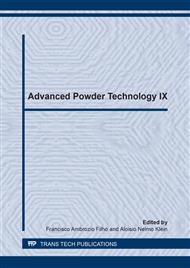p.512
p.518
p.524
p.530
p.535
p.540
p.546
p.552
p.558
Superparamagnetic Iron Oxide Nanoparticles for Magnetic Hipertermia: Synthesis, Surface Modification by Polyethylene Glycol and Characterization
Abstract:
Nowadays, superparamagnetic iron oxide nanoparticles are an important tool for cancer treatment, such as magnetic hyperthermia. The goal is heating diseased tissue and then tumor cells are destroyed. Magnetic nanoparticles are promising mainly because they have specific ability to reduce side effects. However, for in vivo applications, nanoparticles need to be coated by a biocompatible material. In this work, nanoparticles are coated by PEG (biocompatible polymer). Samples were produced by coprecipitation process. Information about particle size, magnetic properties and crystallinity were obtained.
Info:
Periodical:
Pages:
535-539
Citation:
Online since:
December 2014
Keywords:
Price:
Сopyright:
© 2014 Trans Tech Publications Ltd. All Rights Reserved
Share:
Citation:


